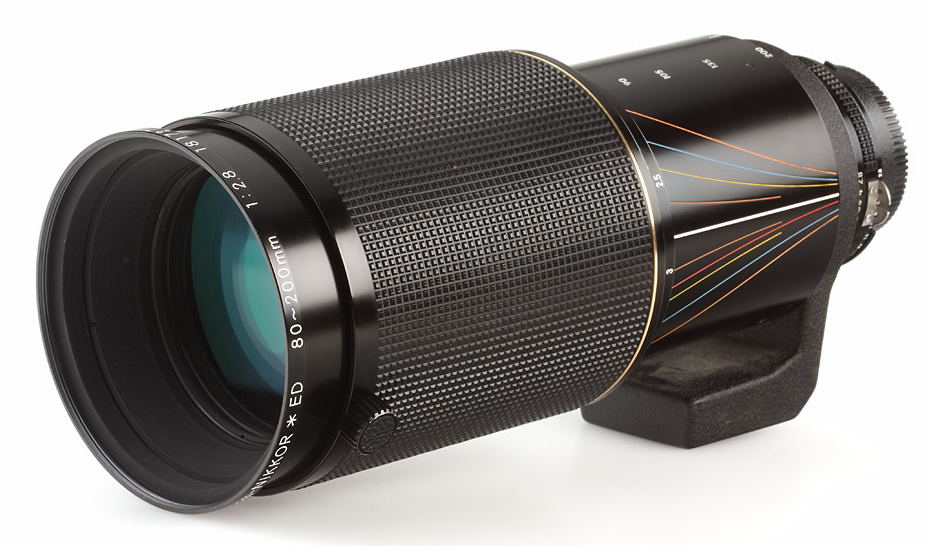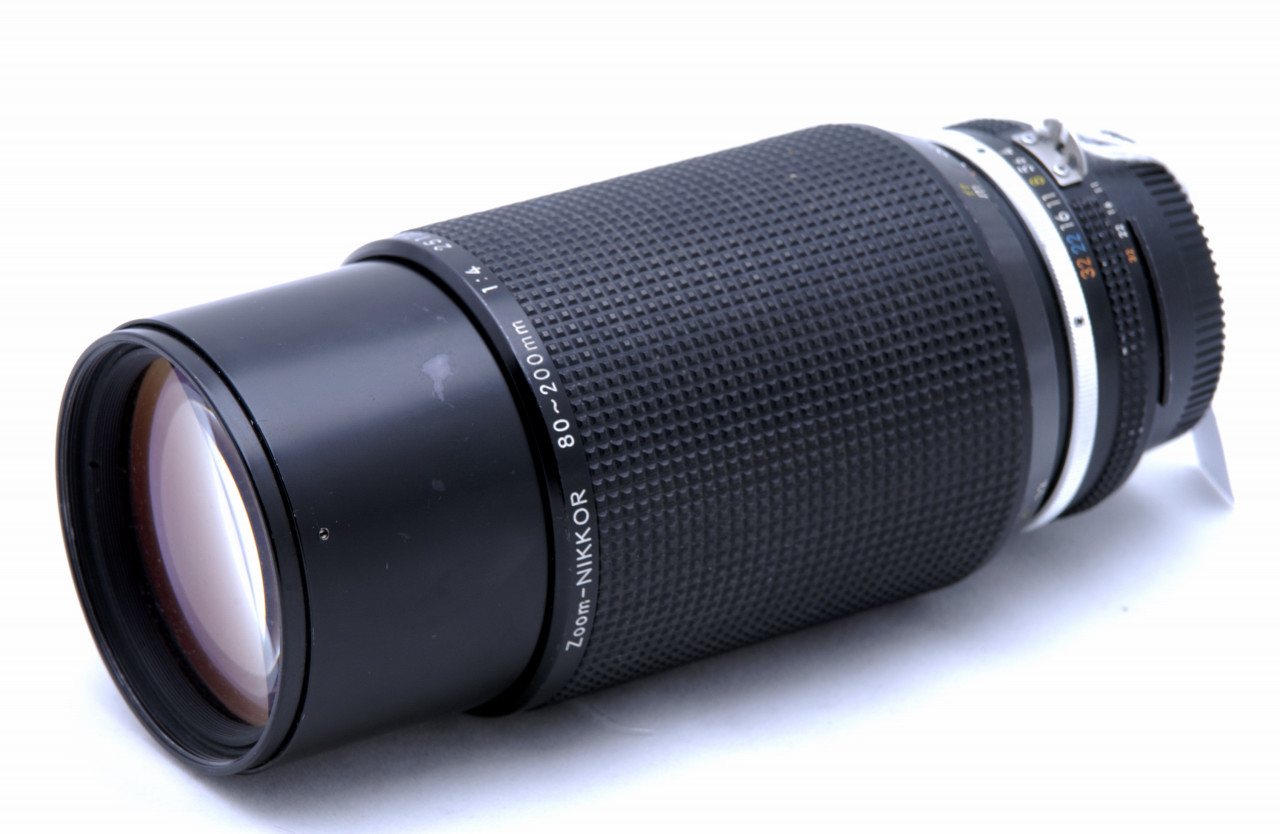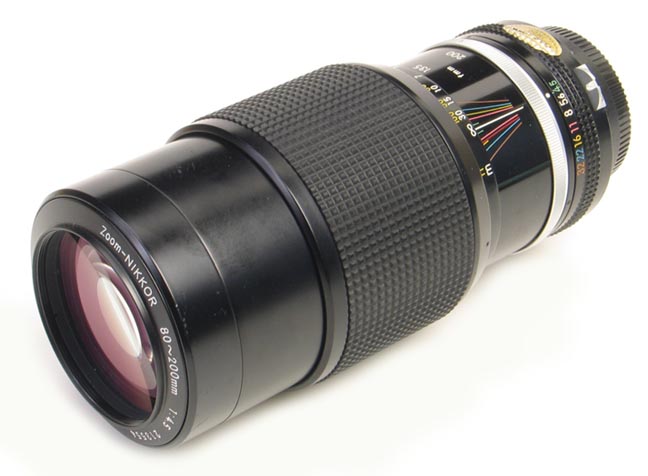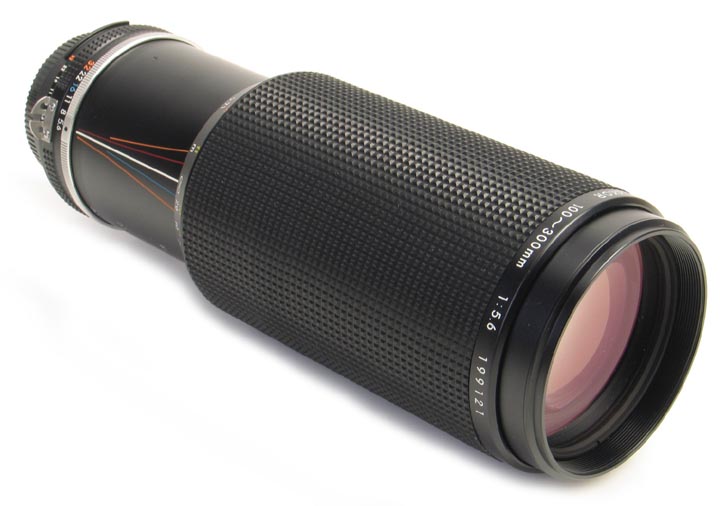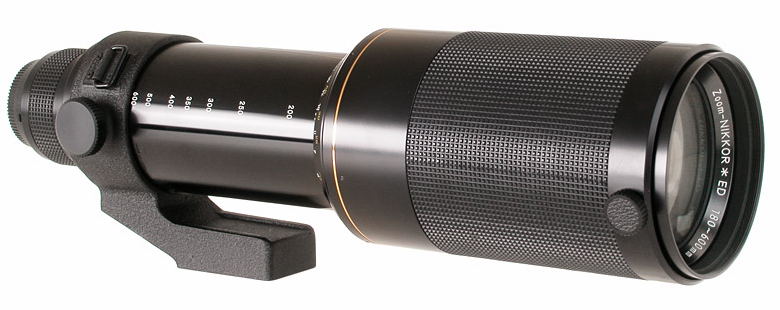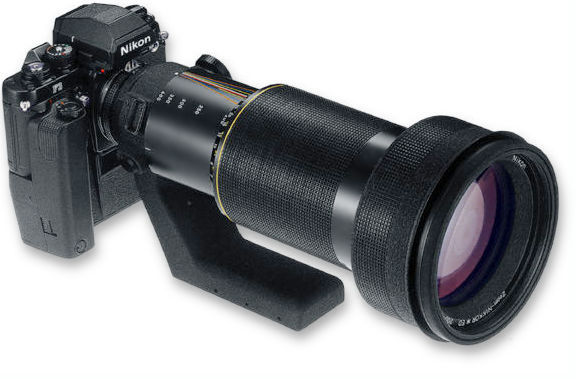Nikkor tele-zoomlenses
Nikon Corporation is known as a virtuoso in lens making. In several cases it was the world´s first when it came to special optics. Also in the range of tele zoom lenses Nikon introduced zoom lenses, of which many technicians, salesmen and photographers would never think that their realization would be possible. Nikon did surprise many people, also its competitors, with zoom lenses that were and still are unique.
2.8/80-200 mm.
Again a lens that made Nikon famous among photographers. In this zoom range Nikon made some excellent lenses since early 1969. Below the predecessors of the present lens are reviewed. The manual version of the 2.8/80-200 mm. - introduced in 1982 - has become a classic among photographers and collectors. It has 15 elements (the second and third are ED) in 11 groups, a filter thread of 95 mm. and a built-in tripod collar with a 360° rotation. Five years after its introduction Nikon came with an autofocus version, which - after many cosmetic and some optical changes - is still available.
4/80-200 mm.
This lens was supposed to succeed the lens, which will be reviewed below, the famous 4.5/80-200mm., but it didn´t became a success. Optically it is not a bad lens, but it had the difficulty to replace a lens with a ´demi-god status´. It was introduced in 1981 but didn´t stay for long.
4.5/80-200 mm.
Introduced in late 1969 this lens became a legend. In its 12 years of production many thousands were sold. The last version has an AI-mount, nearly all older models can be converted. This push-pull zoom lens is razor sharp, takes the well-known 52 mm filters and is easily hand-held. It can be used wide open at all focal lengths without problems. Older lenses do have a problem with the weakening zoom; if the lens is put up straight the zooming front will come down. The AI-version is the best, especially because of the Nikon Integrated Coating.
4 & 4.5/85-250 mm. This 4.5/80-200 mm. Zoom-Nikkor lens is the predecessor of the 80-200 mm. lenses. It was introduced in 1959, together with Nikon´s first single lens reflex camera, the Nikon F. This pull-push zoom of more than 50 cm. long was Nikon´s first zoom design. Aperture is closing half a stop while zooming. Ten years later a modified version with permanent aperture (4/80-200 mm.) was introduced. Both lenses can be focused down to 4 meter, but with the use of a close-up lens down to 2.5 meter. Many lenses were converted for the use on various movie cameras, as it was popular among documentary makers.
5.6/100-300 mm.
This rather slow lens never received many respect among photographers. Optically it is a very good lens, with macro-mode able to provide 1:4.4 magnification (at 100 mm.). In its 6 years of production not many were sold.
8/180-600 mm.
Also this lens played a marginal role among all other Nikkor zoom lenses, mainly because of its price tag. It is the first lens having one ED-element among its 18 (!) glass elements in 11 groups. This construction makes this lens razor sharp. Nowadays hard to find.
4/200-400 mm.
A very nice and razor sharp lens, quite heavy with 3.5 kilo, and at its introduction rather expensive. The latter fact is the reason that in 4 years of production not many lenses were sold. The lens, however, with ED-elements and a rotating tripod collar is one of the best zoom lenses Nikon ever build. Nowadays very rare and very expensive.
9.5-10.5/200-600 mm. Shortly after the introduction of the Nikon F in 1959 this huge lens was introduced. Despite its size and price it became a relatively popular lens. Nikon kept it in production for more than 20 years! It underwent several optical and cosmetic changes. In 1971 a modified version was available with a maximum aperture of f/9.5 at all focal lengths. In 1976 and 1982 respectively the AI- and AIS-version were introduced. All versions were supplied with a rotating tripod collar and a close-up lens, shortening the minimum focusing distance from 4 down to 2.3 meter.
11/360-1200 mm. This monster lens of over 70 cm. long and weighting in at more than 7 kilo is one of the longest zoom lenses on the market. It consists of 20 (!) elements - of which two are ED-glass - in 12 groups. It can only be used on a very stable tripod via the special tripod collar. Four handles make focusing (down to 6 meter!) and zooming easy. Needless to say that this incredible (expensive) lens wasn´t a great seller. It´s one of the rarest Zoom-Nikkors ever.
5.6-8/1200-1700 mm. Talking about rarity! This super-cannon still holds all records in lens making. Nearly one meter long and weighing at 16 kilo (!) handheld photography is impossible. Even mounted on a heavy tripod taking pictures is a tough job. This huge lens was introduced in the early 1990´s. It could be ordered at special request only, so don´t rush to your local dealer for it. Its price tag of an equivalent of 60,000 Euro didn´t made it a great seller. Only a few were build. And it is hard to believe that those lucky owners are using this lens frequently. The lens has an optical formula of 18 elements (of which 3 are made of ED-glass) in 13 groups, manual internal focusing but a built-in processor that communicates data with modern cameras in order to make use of matrix metering and aperture priority - and other programs. Minimum focusing distance is 10 meter.
|
